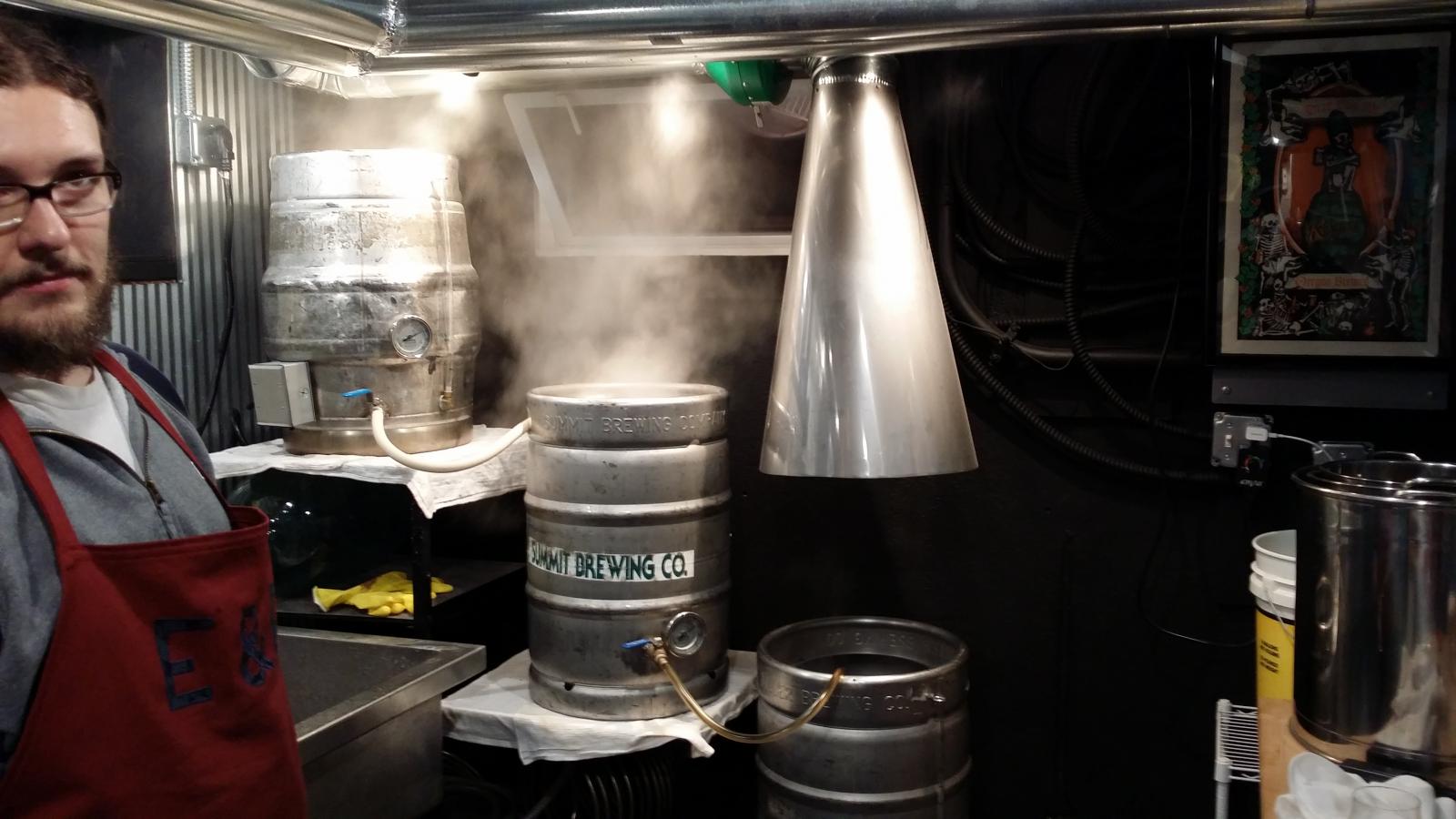andy6026
Well-Known Member
- Joined
- Jan 16, 2013
- Messages
- 1,024
- Reaction score
- 171
Hello everyone!
I'm looking at moving indoors to an electric setup, using the 3-kettle system. I plan on doing 5-10 gallon batches with my boil kettle being 15 or 20 gallons (still undecided). Most photos of indoor setups that I've seen feature custom designed vent hoods that typically are large enough to span across all three kettles (probably 60+ inches). However, I've also seen the odd comment that this is unnecessary and even potentially undesirable as you may get less power over the brew kettle by having a larger/wider vent.
In your experience, is it better to have the vent hood cover all 3 kettles, or just the boil kettle?
Also, another question if I may: My basement also has a gas furnace, gas water heater, and gas powered clothes dryer. How important is it that I create a second air-intake vent, or am I fine with simply keeping a window in the basement open using the vent?
Thanks for sharing your experience and expertise.
I'm looking at moving indoors to an electric setup, using the 3-kettle system. I plan on doing 5-10 gallon batches with my boil kettle being 15 or 20 gallons (still undecided). Most photos of indoor setups that I've seen feature custom designed vent hoods that typically are large enough to span across all three kettles (probably 60+ inches). However, I've also seen the odd comment that this is unnecessary and even potentially undesirable as you may get less power over the brew kettle by having a larger/wider vent.
In your experience, is it better to have the vent hood cover all 3 kettles, or just the boil kettle?
Also, another question if I may: My basement also has a gas furnace, gas water heater, and gas powered clothes dryer. How important is it that I create a second air-intake vent, or am I fine with simply keeping a window in the basement open using the vent?
Thanks for sharing your experience and expertise.




